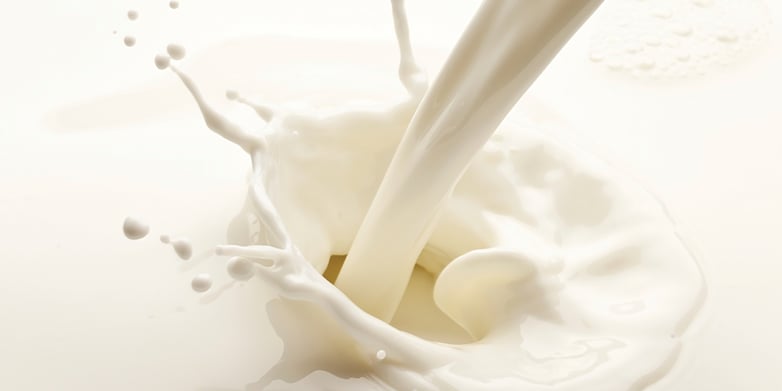
Total Kjeldahl Nitrogen (TKN) Analysis is the standard method for determining protein in milk. Find out how one dairy factory automated the titration portion of their analysis and improved accuracy and saved time.
About Protein in Milk
Proteins are macromolecules that play a crucial role in nutritional growth and development.
These large biological molecules contain at least one long chain of amino acid residues and are responsible for a multitude of biological functions, including DNA replication and repair, catalyzing metabolic reactions, and providing structure and communication in and between cells. The digestive breakdown of proteins into amino acids provides an important source of fuel and dietary nitrogen.
Milk naturally contains a number of key nutrients, including protein, which is beneficial to humans regardless of their age.
Globally, milk is a commonly consumed food product that, due to its high nutrient composition, is regarded as highly beneficial for growth.
In cow and sheep milk the percent protein can range from 3.3% to 5.8%.
Analyzing Protein Content in Milk with Total Kjeldahl Nitrogen Analysis
The standard method for determining the percent protein content in milk is the Kjeldahl method which, in effect, analyzes total nitrogen.
Protein nitrogen derived from amino acids represents approximately 95% of nitrogen in milk. Non-protein nitrogen, such as urea, exists in minor quantities at approximately 5%. Therefore, the protein content in milk can be extrapolated by analyzing total nitrogen.
Because the Total Kjeldahl Nitrogen (TKN) analysis does not directly measure protein, the result of total nitrogen is converted into percent protein by multiplying by a factor of 6.38. The conversion factor of 6.38 is specific to milk in that it accounts for the nitrogen content of the average known amino acid composition that is present.
AOAC 991.20 method for TKN analysis in milk involves three stages:
1. Digestion
In the initial digestion stage, a mixture of potassium sulfate, copper sulfate, and sulfuric acid are added to a digestion flask containing a pre-weighed, pre-heated (38°±1°C) sample of milk. The digestion solution is heated and kept at a rolling boil for approximately 1.5 to 2 hours. After cooling, purified water is added to the digest. The digest is then transferred to a distillation flask, where sodium hydroxide is added to neutralize the solution and ultimately convert ammonium sulfate to ammonia gas.
2. Distillation
In the distillation stage, the solution is again heated until all of the ammonia gas is liberated and captured in a boric acid solution.
3. Titration
The analysis stage first involves the titration of a blank sample, containing only digested reagents, followed by the titration of the sample-containing distillate with a standard sulfuric or hydrochloric acid solution.
Case Study
A dairy manufacturer contacted Hanna in hopes of automating their TKN analysis of milk.
The factory was currently measuring total nitrogen following the official AOAC 991.20 method. While they still required the digestion and distillation for their analysis, they wanted to automatically perform their titration to avoid the inconsistencies of manual titration.
Hanna recommended the HI932 Advanced Automatic Potentiometric Titrator with the HI1131B General Purpose pH Electrode.

The titrator and electrode pair provided a much more accurate and repeatable titration for the determination of total nitrogen in their milk products.
Since their TKN analysis required both a blank titration of the reagents and a sample titration, the factory appreciated the ease of programming a blank value into the calculations.
They no longer had to manually perform and calculate two titrations, which proved much more timely and cost-efficient.
The dairy manufacturer was also able to save bench space, as the HI902C also operated as a basic meter to measure pH and temperature.
Ultimately, the factory recognized the automatic titrator as a wise investment, as the high accuracy measurements resulted in an improved final product.
Get in touch with us to find out more about our automated titration systems.
That's why we've dedicated our blog as a helpful resource for you to use! Catch up on the latest products, explore industry trends, discover testing tips, learn how to improve results, and more. Got questions? Email sales@hannainst.com.

